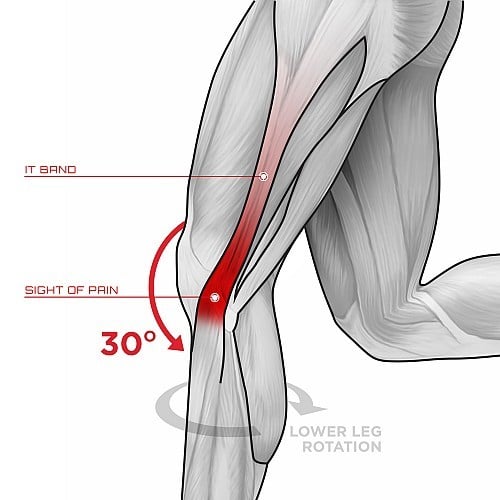
Running Injuries and Injury Prevention
Welcome to my resource hub for running injuries and injury prevention. All my coaching tips and your injury related questions answered in one place.
Running is a fantastic way to stay fit, but like any sport, it comes with its share of risk for injury. Especially, when you train improperly.
This page is a work in progress and it will take time for me to find and pull in all the articles and podcast episodes I have on the topic. Some of the following section titles are placeholders. In the meantime, you can scroll back through my articles from the home page until I get everything consolidated here.
In my online run coaching practice, one of the primary reasons clients seek me out is often to get help overcoming nagging injuries. It is a problem that has been facing runners since the beginning.
Running injury free has less about what running shoes you should use, and more about how to properly balance training volume and intensity, proper nutrition, building strength and mobility, biomechanics and running form, and proper buildup to pace speed and distance.
Runners who understanding basic injury prevention techniques and can recognize early-onset signs and symptoms of common running injuries will find themselves running for years to come and more likely to stick to the sport you love.
Medical Disclaimer: The RunBuzz website provides general information and discussions about health and related subjects. The information and other content provided in this blog, website or in any linked materials are not intended and should not be considered, or used as a substitute for, medical advice, diagnosis or treatment. I am not a doctor and cannot diagnose conditions, provide second opinions or make specific treatment recommendations through this blog or website. If you or any other person has a medical concern, you should consult with your health care provider or seek other professional medical treatment immediately. Never disregard professional medical advice or delay in seeking it because of something that you have read on this blog, website or in any linked materials.
Injury Prevention Strategies For Runners
Recognizing Early Warning Signs of Injury
Proper Running Form
Warming Up and Cooling Down
Choosing the Right Footwear
Gradual Progression
Cross-Training
Strength Training For Runners
Flexibility and Mobility
Nutrition and Hydration
Rest and Recovery
Common Running Injuries
Plantar Fasciitis
Plantar fasciitis, is a common, and often pesky injury for runners. It is an inflammation (and sometimes partial tear) of the band of tissue running under your foot, that originates from your heel and runs to your toes.
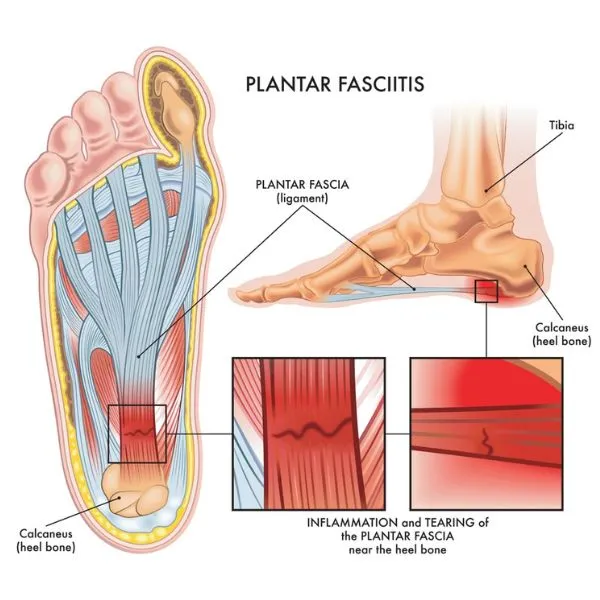
Plantar Fasciitis often strikes after sudden increases in mileage or intensity, leaving your first steps in the morning painful and very sore. Think sharp stabs of pain in your heel, especially when getting out of bed or after periods of rest.
While rest and self-care can help for extremely mild cases, most often you will need a multi-pronged approach at getting rid of it. This injury is one that I personally struggled with for a few years and spent a lot of time discussing on the podcast. Because it comes up so much, I documented my 9 steps on how to get rid of Plantar Fasciitis in this easy, step by step guide.
Shin Splints (Medial Tibial Stress Syndrome)
Shin splints, also known as medial tibial stress syndrome (MTSS), are a common issue among runners and athletes. They are characterized by pain along the inner edge of the shinbone (tibia).
Shin splints typically result from repetitive stress on the shinbone and the surrounding muscles and tissues.
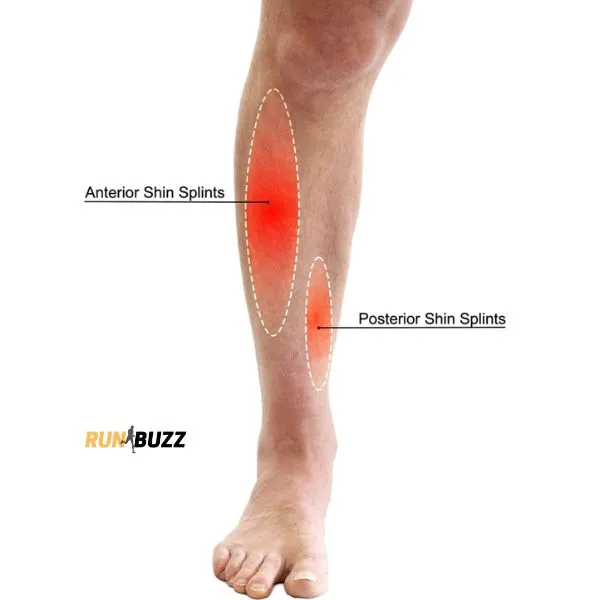
Shin splints are caused by overuse and repetitive stress on the shinbone. Common contributing factors among runners include sudden increases in mileage or intensity, running on hard surfaces, improper footwear, and poor running biomechanics.
Runners with shin splints typically experience pain and tenderness along the inner edge of the shinbone. The pain is usually dull and aching but can become sharp during activity. It may start at the beginning of a run and worsen as the run progresses.
I go into a lot of detail on how to get rid of shin splints in the following article and podcast:
How To Get Rid Of Shin Splints (And How To Avoid Them In The Future)
Runner’s Knee (Patellofemoral Pain Syndrome)
Runner’s knee, medically known as patellofemoral pain syndrome, is a common condition among runners. It isn’t a specific injury, but rather a “catch-all” condition that refers to pain around the kneecap (patella). Runner’s Knee is usually caused by repetitive stress on the knee joint.

This stress can result from misalignment of the kneecap, improper training volume and intensity leading to overuse, weak or imbalanced thigh muscles, flat feet, or history of direct trauma.
Symptoms typically include a dull, aching pain in the knee, which may worsen with activities like running, climbing stairs, or prolonged sitting.
Treatment often involves cutting back on training volume and intensity, avoiding hills during the recovery period, strengthening and stretching exercises, and sometimes adjustments in running technique or footwear.
Achilles Pain
The most common type of Achille pain in runners is Achilles tendinopathy. Achilles tendinopathy is an irritation of the Achilles tendon, a thick band of tissue along the back of the lower leg that connects the calf muscles to the heel.

Achilles tendinopathy is linked by research to several different factors, including:
- Tightness in the calf muscle and/or muscular weakness
- Abnormal foot structure and/or running mechanics
- A sudden increase or change in an exercise routine or sport activity
- Being overweight or obese
- Improper footwear (including your non-running footwear)
IT Band Syndrome
Iliotibial Band Syndrome (often referred to as IT Band Syndrome) is one of the most common injuries that runners experience.
The IT Band is a thick band of connective tissue that runs from the outside of your hip to the outside and across your knee.
When this tissue becomes inflamed, it can cause moderate to severe pain at or near the knee. In a few rare cases, pain can occur along the IT Band itself higher up towards the hip.
Stress Fractures
A stress fracture is a small crack in a bone, often caused by repetitive force, like running on hard surfaces. Like other overuse injuries, stress fractures can arise from increasing running intensity or volume too quickly. Common sites for runners include the tibia and fibula of your lower leg, the metatarsals or other bones in your feet, your pelvis, but can occur just about anywhere there is repetitive stress.
If you notice these symptoms, it’s important to see a doctor for proper care. Running on a stress fracture can make it worse.
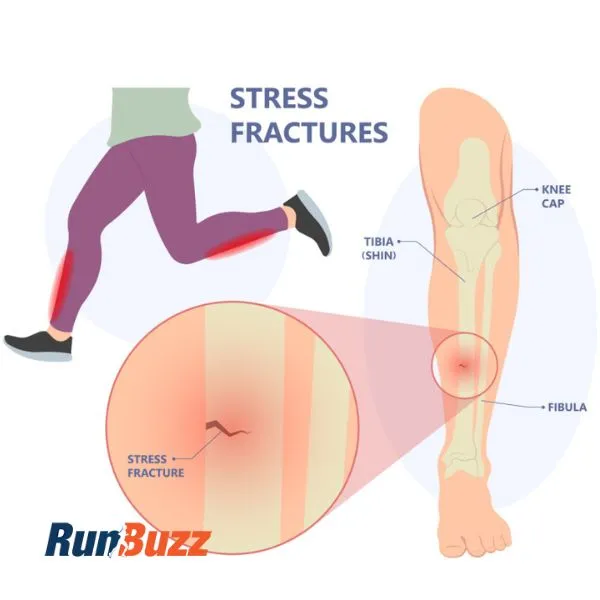
Below are some common symptoms of a stress fracture.
- Localized Pain: This is often the first sign. The pain usually starts as a dull ache at the site of the fracture and is specifically related to weight-bearing activity.
- Swelling: You may notice slight swelling around the painful area.
- Tenderness: The spot where the fracture has occurred is often tender to touch.
- Pain that Worsens with Activity: Initially, the pain may only occur during or after running and improves with rest. Over time, it can become constant.
- Pain that Decreases with Rest: The pain typically diminishes when you stop the aggravating activity and rest.
- Bruising: In some cases, there might be bruising around the affected area.
Hamstring Injuries
Ankle Sprains
Blisters and Chafing
Blisters are fluid-filled bubbles that form on your skin due to friction and rubbing. They usually occur anywhere your sock or shoe rubs repeatedly against your skin.
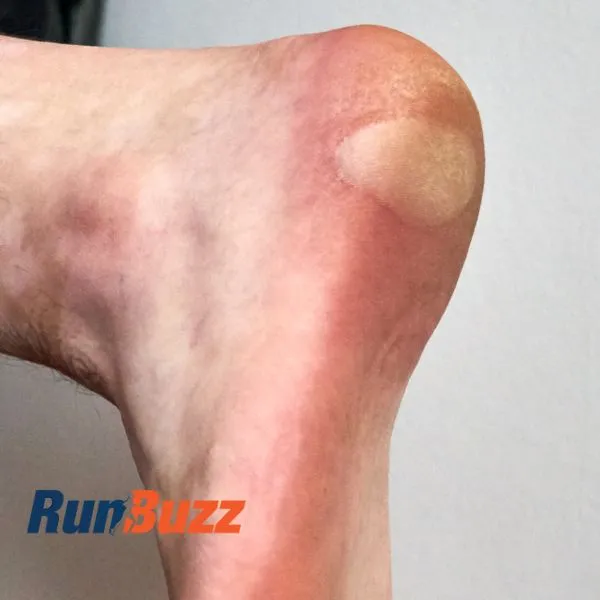
This rubbing creates a mini-sandpaper effect that separates the skin layers and fills the blistered area with fluid to protect the skin layers from further damage.
The most common area runners get blisters at is in the friction areas on your heels, the balls of your feet, and your toes.
Properly fitted shoes, good moisture-wicking running socks, and
Injury Management and Rehabilitation
When to See a Doctor, Physical Therapist or Specialist
It’s crucial to be aware of the signs that indicate seeking professional medical help instead of attempting self-treatment for a running injury. Here are some red flags that warrant a doctor’s visit:
When to seek immediate attention
- Severe pain: Any pain that’s intense (7-10 on a pain scale), constant, or interferes with your daily activities like walking or sleeping needs immediate medical attention.
- Sudden swelling or deformity: Noticeable swelling in an injured area, especially if accompanied by a change in shape (deformity), could point to a serious issue like a fracture or ligament tear.
- Numbness or tingling: Loss of sensation or tingling in the injured area can indicate nerve damage and requires prompt medical evaluation.
- Inability to bear weight: If you can’t put weight on the injured leg or can only do so with significant pain, seek medical attention right away.
- Fracture concerns: Signs like bone grinding, popping sounds, or an obviously misshapen limb suggest a possible fracture and need immediate attention.
What to do if your injury is not getting better or if symptoms worsen
- Pain persists after rest: If pain doesn’t improve or even worsens after several days of rest and ice, it’s time to see a doctor for proper diagnosis and treatment.
- Pain radiating elsewhere: Pain spreading from the initial injury site to other areas like the knee or hip could indicate a more complex issue.
- Limited range of motion: If you experience significant loss of movement in the injured area, particularly after a few days of rest, consult a doctor.
- Fever or chills: These symptoms, in conjunction with a running injury, could indicate an infection and require prompt medical attention.
When to see a physical therapist or specialist
- Chronic pain: Persistent pain that doesn’t respond to self-treatment options like rest, ice, self-care, stretching may require a specialist’s expertise for diagnosis and management.
- Recurring injuries: If you repeatedly experience the same running injury, a specialist can help identify underlying causes and prevent future occurrences.
- Complex injuries: For suspected fractures, stress fractures, ligament tears, or other complex injuries, a specialist’s evaluation and treatment plan are crucial.
Remember, it’s always better to err on the side of caution when dealing with running injuries. Consulting a doctor or specialist can ensure accurate diagnosis, appropriate treatment, and a quicker return to your running routine.
Additional tips
- Listen to your body: Don’t push through pain if it feels unbearable. Stop running and seek professional help.
- Don’t delay: Early diagnosis and intervention usually lead to faster recovery and prevent complications.
- Be honest with your doctor: Describe your symptoms and previous injuries accurately to facilitate proper diagnosis.
- Follow treatment recommendations: Adhere to the doctor’s advice regarding rest, activity modification, medication, and physical therapy.
By being proactive and seeking medical attention when necessary, you can enjoy a healthy and injury-free running journey!
Choosing a Sports Medicine Professional
Finding the right sports medicine doctor who understands the specific needs of runners can be crucial for optimizing your performance and preventing injuries. Here are some key things to consider based on industry recommendations:
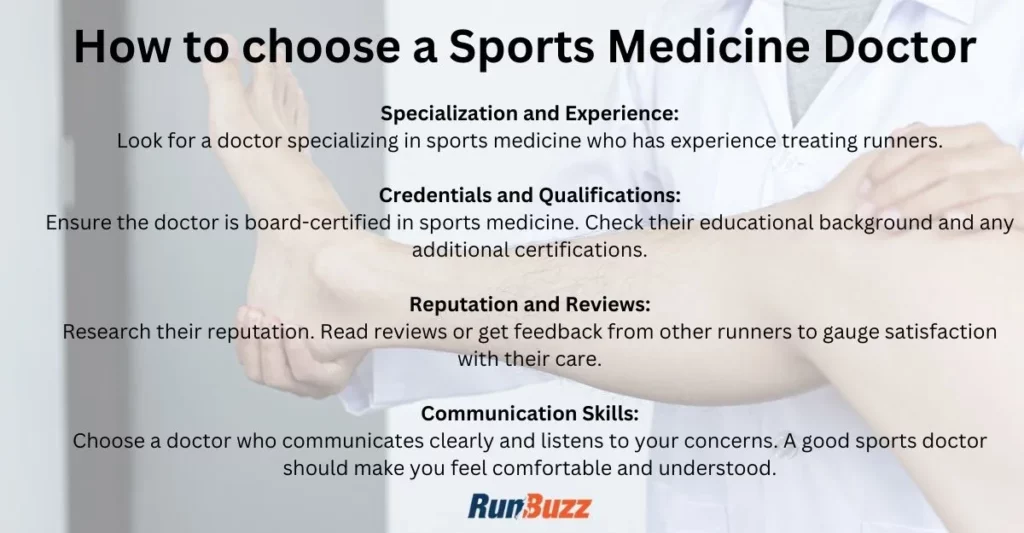
Credentials and Experience:
- Training and education: Look for a doctor with board certification in sports medicine. Their background could be in family medicine, orthopedics, or emergency medicine, but they should have completed additional training in sports medicine.
- Experience with runners: Ideally, choose a doctor who has experience treating runners and understands the common injuries and challenges you might face. Some doctors even specialize in treating specific running-related conditions, like overuse injuries or stress fractures.
- Fellowship training: While not always essential, a fellowship in sports medicine, particularly one focused on running, can indicate advanced expertise and experience with runners.
Treatment Philosophy and Approach:
- Comprehensive approach: Look for a doctor who uses a holistic approach that goes beyond just treating injuries. They should consider your training program, nutrition, and overall health when making recommendations.
- Focus on prevention: A good sports medicine doctor will prioritize injury prevention strategies like proper form, training plans, and strength and conditioning exercises.
- Conservative treatment options: Most running injuries can be treated with non-surgical methods like physical therapy, rehabilitation exercises, and activity modification. Choose a doctor who emphasizes these options before considering surgery.
Communication:
- Communication style: It’s important to find a doctor you feel comfortable communicating with. They should be able to explain your condition and treatment options in a clear and understandable way.
- Availability and responsiveness: Consider how easily you can schedule appointments and get in touch with the doctor when needed.
- Bedside manner: Choose a doctor who is positive, supportive, and understands your goals as a runner.
Additional places to find a sports medicine doctor that is right for you:
- Ask for recommendations: Get referrals from your regular doctor, fellow runners, coaches, or athletic trainers.
- Check online reviews: Read reviews of sports medicine doctors in your area to get a sense of their patients’ experiences.
- Use healthcare provider directories: Your insurance company’s website or online platforms like Healthgrades can help you find doctors within your network and compare their credentials.
Remember, finding the right doctor is a personal decision. Take your time, ask questions, and trust your gut feeling to choose someone you feel comfortable with and confident in.
Sources and Citations
Fredericson M, Jennings F, Beaulieu C, Matheson GO. Stress fractures in athletes. Top Magn Reson Imaging. 2006 Oct;17(5):309-25. doi: 10.1097/RMR.0b013e3180421c8c. PMID: 17414993.
McCormick F, Nwachukwu BU, Provencher MT. Stress fractures in runners. Clin Sports Med. 2012 Apr;31(2):291-306. doi: 10.1016/j.csm.2011.09.012. PMID: 22341018.

